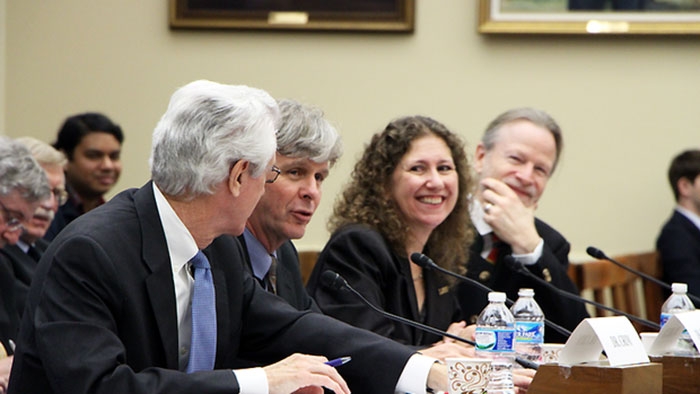LIGO's gravitational-wave discovery is Physics World 2016 Breakthrough of the Year

Following their discovery, the US White House Committee on Science, Space, and Technology asked LIGO Scientific Collaboration members to testify on the discovery, its meaning for science and society, and what the future may hold. From left to right: assistant director of the NSF's Directorate of Mathematical and Physical Sciences, Fleming Crim; LIGO lab director David Reitze; LIGO spokesperson Gabriela Gonzalez; and LIGO MIT director David Shoemaker. (Courtesy: LIGO Collaboration)
The Physics World 2016 Breakthrough of the Year goes to "the LIGO Scientific Collaboration for its revolutionary, first-ever direct observations of gravitational waves". Nine other achievements are highly commended and cover topics ranging from nuclear physics to material science and more.
Almost exactly 100 years after they were first postulated by Albert Einstein in his general theory of relativity, gravitational waves hit the headlines in 2016 as the US-based LIGO collaboration detected two separate gravitational-wave events using the Advanced Laser Interferometer Gravitational-wave Observatory (aLIGO). The first observation was made on 14 September 2015 and was announced in February this year. A second set of gravitational waves rolled through LIGO's detectors on 26 December 2015, and this so-called "Boxing Day event" was announced in June this year. Gravitational waves are ripples in the fabric of space–time, and these observations mark the end of a decades-long hunt for these interstellar undulations.
See full text